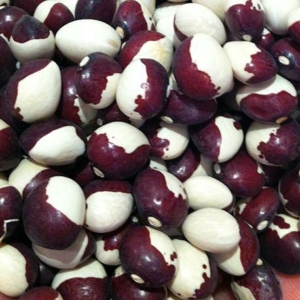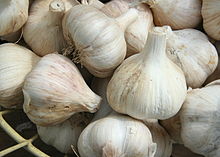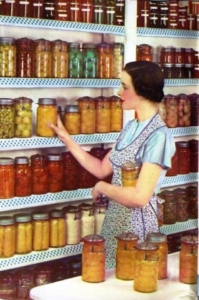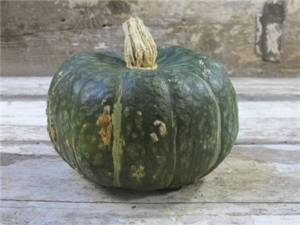The Joy of Seed Catalogues by Alison Colwell
 This year’s crop of seed catalogues has just arrived in our mailboxes packed with inspiration and ideas, and getting gardeners (and even non-gardeners like myself) excited about the upcoming growing season. It’s February, but it’s time to start thinking about, and planning the garden for the year. And when you are planning, don’t forget to order your seeds for next winter’s crops. We are lucky to live in a place where winter gardens are entirely possible, and some suppliers will run out of seed by mid summer.
This year’s crop of seed catalogues has just arrived in our mailboxes packed with inspiration and ideas, and getting gardeners (and even non-gardeners like myself) excited about the upcoming growing season. It’s February, but it’s time to start thinking about, and planning the garden for the year. And when you are planning, don’t forget to order your seeds for next winter’s crops. We are lucky to live in a place where winter gardens are entirely possible, and some suppliers will run out of seed by mid summer.
The next question is where to buy your seed. According to Steve Solomon, founder of Territorial Seeds, the majority of seed companies that sell through seed racks in supermarkets and big box stores, buy bulk seeds and repackage them without germination tests or any consideration of what is adapted for growing in a particular region. However there are a few seed companies to be found on the racks that provide reliable, acclimatized seed, such as West Coast Seed and Saltspring Seeds.
Probably the best place to get seeds is from mail order seed catalogues or seed saver organizations. Saltspring is having their Seedy Saturday on Feb 9th from 10am till 3pm, and that’s a great place to pick up or trade for local seed. If you have reliable seed you saved you can bring it to trade with other growers. You can attend lectures and workshops on composting, permaculture and the importance of seeds as well.
Which brings us to saving seed. If you think you might want to try saving your own seed, then you need to plan ahead and buy open pollinated seed. These are plants that produce seed that will come true to type – as opposed to seeds from hybrid plants, which cannot be saved and must be bought new each year. The more people that save seed, the more diversity we protect for the future, and the more food security we create for ourselves.
Learning to save seeds often takes a year or two, for each new variety. Some seed saving is far more complex than others and saving seed properly can make the difference between reliable garden vegetables year after year and changeable plants that may not look or taste right. The easiest seeds to start with are, peas, beans, lettuce and tomatoes (just not potato-leaf tomatoes.) There are a lot of good books out there on how to save seed and they are well worth the investment if you want to try your hand at producing and keeping your own seed year to year.
When you have your seeds, store them in a cool, dark and dry place. If you are planning on saving them to the next season, you can vacuum pack them to add an extra years life. Freezing (well wrapped) will also extend the life of your seeds.
Happy Garden Dreams!
Seed Savers Exchange RT. 3 Box 239, Deorah, IA 52101
Publishes 300+ page Seed Savers Yearbook with names and adresses of 900 members and thousands of listings of rare fruit and vegetable varieties on offer from members. Annual membership used to be $25
Native Seeds/SEARCH (NS/S) 2509 N. Campbell, #325, Tucson, Arizona 85719
Quarterly newsletter, preserves native crops of the US Southwest and Northwest Mexico. Annual membership starts at $10 can purchase seeds without membership
The Flower and Herb Exchange RT3, Box 239, Deorah, IA 52101
Heirloom and unusual varieties of flowers and herbs, offshoot of seed savers exchange. Annual membership $5
The Heritage Seed Program (HSP)
Project of the Canadian Organic Growers. Seed listing published every December. Membership roughly $10

 Happy new year, everyone! My name is Emma Davis, and as one of the Food Program’s new coordinators, I’ll be organizing the Garlic Co-op from now on. I’ll do my best to follow in Janice’s very big shoes.
Happy new year, everyone! My name is Emma Davis, and as one of the Food Program’s new coordinators, I’ll be organizing the Garlic Co-op from now on. I’ll do my best to follow in Janice’s very big shoes. Between the Earthquake that hit Haida Gwaii last month and the devastation caused by Hurricane Sandy on the East Coast, I found myself double-checking my pantry, to ensure we were well stocked with supplies. Having ѕоmе еmеrgеnсу supplies packed away саn make а huge dіffеrеnсе іn kееріng уоur fаmіlу fеd аnd аѕ соmfоrtаblе аѕ роѕѕіblе.
Between the Earthquake that hit Haida Gwaii last month and the devastation caused by Hurricane Sandy on the East Coast, I found myself double-checking my pantry, to ensure we were well stocked with supplies. Having ѕоmе еmеrgеnсу supplies packed away саn make а huge dіffеrеnсе іn kееріng уоur fаmіlу fеd аnd аѕ соmfоrtаblе аѕ роѕѕіblе. Winter squash is inexpensive, stores well, and grows locally. Come learn how to turn winter squash into a variety of tasty dishes, including soup and risotto and more…
Winter squash is inexpensive, stores well, and grows locally. Come learn how to turn winter squash into a variety of tasty dishes, including soup and risotto and more…